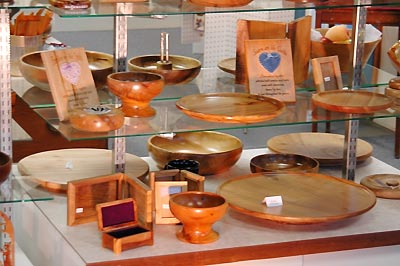Myrtlewood
Myrtlewood Facts:
- Green Myrtlewood is so heavy it won’t float.
- Each piece is as different as a set of fingerprints.
- One of the world’s largest known Myrtle trees is just minutes from Gold Beach up the Rogue River.
- Myrtlewood is very slow growing. A tree four feet in diameter may be 500 years old.

What is it?
Botanically, Myrtlewood is California-laurel (Umbellularia californica), but in Oregon it is known as Oregon Myrtle or Myrtlewood..
Botanically, Myrtlewood is California-laurel (Umbellularia californica), but in Oregon it is known as Oregon Myrtle or Myrtlewood..
What it looks like?
In the open, Myrtle shapes itself into a ball for protection from the wind. In the forest, Myrtle grows straight and tall, reaching heights of 60 to 100 feet. The leaves are smooth, shiny and aromatic. They are often used as a seasoning (similiar to bay leaf).
Gifts and products:
The wood of the Myrtle tree is used to make a variety of unique products including miniature lighthouses, gun stocks, bowls, clocks and nearly anything else you can imagine.
Workshop tours:
Visit a local Myrtlewood shop and ask for a tour of their workshop. Watch as craftsmen shape rough pieces into works of art.
